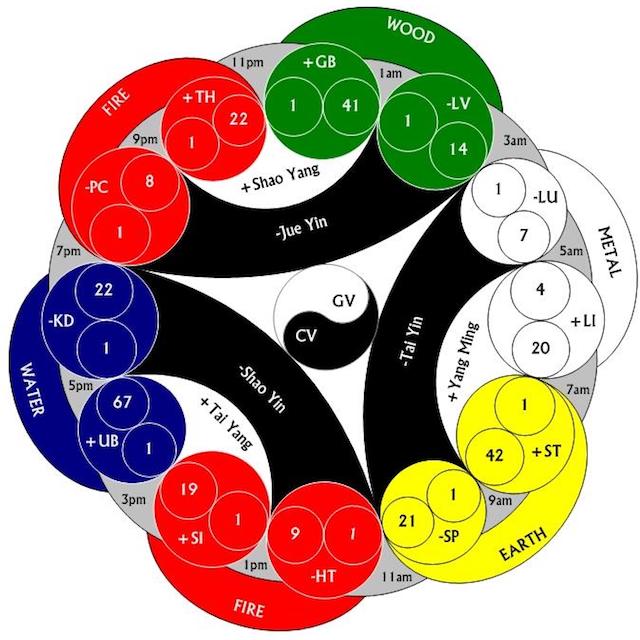What if I were to say to you that feelings are inherently meaningless, and that each of us spends a great deal of our time actively lying to ourselves and other people?
I say feelings are meaningless based on the concept that feelings are inherent parts of our experience and therefore are inevitable. The issue lays not in having feelings but in personalizing them, congesting them, and standardizing them in comparison to other people’s responses to things.
When we have a difficult experience that we are not able to work through, it is because we have not been taught how to work through it—we don’t have the correct guidance or resources, so they build up inside of us and even can show up as physical imbalances.
For instance, we can become energetically stagnant, which, in Chinese medicine, is represented in physical form by a lack of free flow of blood, qi, or body fluids, thus disrupting circulation. The heart is the organ which processes all emotional experiences and consequently is the first to become stagnant and affect the other organs. Because the basic philosophy of Chinese medicine dictates that everything has a spirit, and each physical organ has its own associated emotion. The health, or lack of health, of that particular organ health influences our psychological and emotional behavior. We can better understand the pathomechanism of how energetic stagnation of emotions can become trapped within our physical bodies.
This is not as esoteric or out there as it sounds since we know from modern science that hormones and stress influence physiology just as much as external medications or herbal medicines, as well as the proof that traumatic experiences are stored in muscle memory. When we experience this type of physical tension in the body it innately prevents us from feeling truly good.
It is important to acknowledge and identify this because there is a large stress on having cathartic experiences, and then trying to relive peak experiences or emotional highs amongst everything from healing and spiritual communities to differing subcultures around the world. Going to a festival and dancing while high on psychedelics is one example of this, while listening to depressive music, writing poetry, and drinking booze when we are in a funk is the other end of this spectrum.
In both cases, there is an attachment to cathartic experience of emotions, which prevents us from moving past the pinball effect of bouncing from one extreme to the next. Of course neither of these things are inherently bad if we are not overly attached or emotionally addicted to reliving them after they have passed their course.
When we return to baseline, there is a sense of emptiness since we have not really dealt with what was already there or the energetic stagnation, which was temporarily moved, through our use of substances, sex, gambling, or stimulating auditory experience. Thus the addictive cycle of chasing cathartic, peak experiences—the “highs”—is put into play to continue the polar expressions of reality while avoiding the “lows” and inner conflict—so it stays unresolved.
Another example of how we get wrapped up in opposite sides of the spectrum is societal differences between sexes. In general, men are socialized toward not expressing their emotions and remain overly cool and collected even if they are not. It is more acceptable for women, generally, to let things go, cry, and be emotional.
Both of these societal expectations can lead to psychological and physical imbalances in people as well as lead to energetic and physical stagnation.
How we are actively lying to ourselves:
By telling ourselves stories about why we have digestion issues, or skin problems, we begin to identify with the illness or the pattern of pathology. We begin to focus more on the problem than the solution. Most holistic therapies focus on applying physical herbs, acupuncture points or other nutritional therapies, which can be useful but often times ignore the root of the inner conflict that resides within the individual. This is an illustration of a pattern of behavior to experience different emotional states (even through holistic therapy) of well-being or disease, than honestly seeing the truth of our own story.
Catharsis can work two ways: people are either stuck in their own inner story of pain, suffering, anxiety, overly identifying with emotions and emotional experiences or are chasing chemical highs.
This pattern of behavior creates a pendulum like cycle of pathology where we are either chasing peak experiences or living in the negative emotions and stories we have told ourselves that are based on previous traumatic experience.
How we can stop lying to ourselves:
Practice the middle path.
The Middle Way is often referenced in Buddhist texts and on a general level refers to not over identifying with experiences. It’s about learning to be content with a sense of neutrality while still being present in the process of our full story.
The middle path is a perspective of equanimity, which involves the practice of not checking out of unpleasant feelings, avoids overly fixating on extremes, and instead, harmonizes the spirit of a person through the meditative practice of not creating aversion around difficulty, nor becoming overly attached to joyful experiences.
By intentionally putting forth the effort to train one self to be mindful of our attachments and aversions, we are able to transcend the cycle of suffering. This more specifically refers to our attachment to things which we can experience and enjoy without becoming overly identified with, and in contrast, letting go of limiting beliefs or stories which prevent us from moving past difficulty. Lastly, this enables us to work through disharmony without emotionally identifying with it, accelerating the process of healing and strengthening skillful psychological behaviors and emotional intelligence.
Practice noticing various emotional states throughout each day, whether they are pleasant or unpleasant, and instead of pushing the unpleasantness away, non-judgmentally acknowledge and observe with a sense of curiosity the change in feeling behind this experience. When we are enjoying life, we can acknowledge it and appreciate it while being aware of our (natural) tendency to cling to happiness. Practice taking deep breaths while relaxing tense muscles when experiencing a difficult or stressful situation in order develop a sense of physical mindfulness as well.
According to the Chinese philosophy of Wu Xing (the five phases or elements), a balanced person should experience the emotions of anger (wood), joy/anxiety (fire), overthinking/worry (earth) grief/sadness (metal) and fear (water) while being able to process and work through each of them so that none of them become a predominant emotion in one’s life. Developing a daily meditation practice is useful in training ourselves so that we notice when we are slipping into certain states because we are identifying too closely with a particular story, identity, or emotion.
The practice of walking the middle path entails the sense of contentment, which is feeling truly content and at peace with all that is. Essentially, it is learning to see and accept that joy and pain are one, and all is highly temporary in the broad scope of the conscious expansive experience.
~
Author: Brandon Gilbert
Image: Wikipedia Commons
Editors: Travis May











Read 1 comment and reply